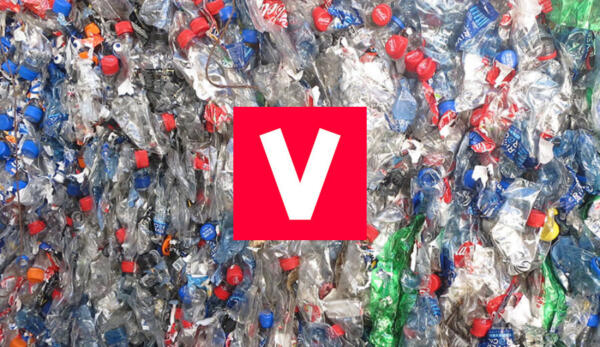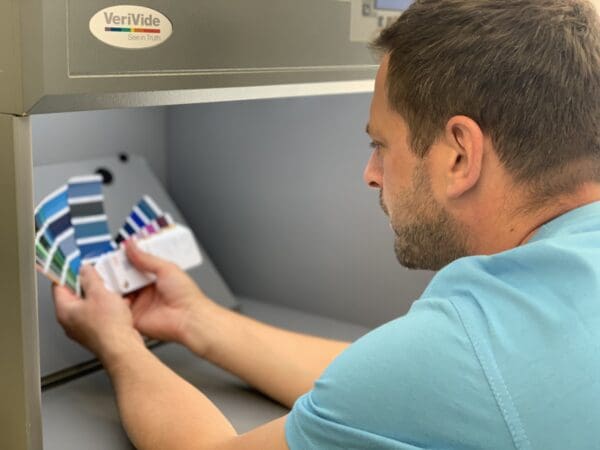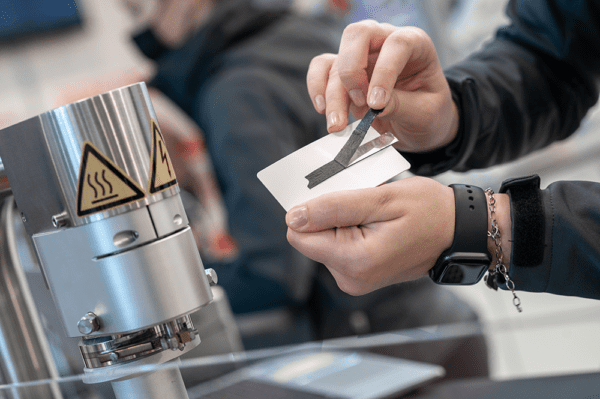
PET Recycling and rPET: What you need to know
What is PET in recycling?
PET is a plastic resin, and form of polyester, polyethylene terephthalate, is a combination of two monomers, ethylene glycol and purified terephthalic acid. The holds the title of the most widely recycled plastic in the world and is a significant fraction of the mixed plastic waste stream.
PET and rPET in manufacturing, converting and recycling
According to a Plastics Recyclers Europe evaluation, in 2017 the PET recycling capacity for Europe was 2.1 million tonnes, with Germany, France, Italy and Spain accounting for 65% of the total PET recycling market.
It’s reported that 1.9 million tonnes of PET plastic waste was transformed into 1.4 million tonnes of recyclates, which were used to produce new articles, meaning that 200,000 tonnes of PET are going unused. While PET is the most recycled plastic packaging material in Europe, collection rates vary across the EU member states; some collect in excess of 90% of PET bottles, while others collect less than 20%.
Historically, virgin PET was a more cost-effective material, as the price was driven down by overcapacity, dropping raw material prices, and pressure from lower-cost imports. But the nature of the industry is changing, forcing firms from sectors such as bottling, packaging, thermoforming, rigid packaging and moulding industries to secure rPET in their supply chains.
In all these sectors, the polymer can be reprocessed to granulate and reinserted back into its original supply chain to create new PET feedstock.
The bottling sector is still in the spotlight
The European bottled water sector pledges include ensuring that by 2025, 90% of all PET bottles are collected in the EU. This will eventually be underpinned by the upcoming Single-Use Plastics Directive which is likely to be adopted by all EU member states. This initiative will ensure a consistent stream of rPET, with the goal of meeting its other target of making sure the production of new bottles includes at least 25% of rPET by the same year.
The question of plastic recycling and what is achievable has been cast into the spotlight in recent years, with regards to the current widespread methods of disposal, such as landfill or burning, and the significant negative impact these ‘solutions’ have on the environment. While a common counter-argument for the recycling of plastic is often around the energy consumption and carbon footprint the process leaves behind, the use of rPET in place of virgin PET results in reduced energy consumption, reduced environmental impact and lower costs.
Previously, there was no true incentive to use rPET, and the driving force now is down to consumer demand for recycled material, and the potential backlash on a brand if this is ignored. In short, brands are seeking to meet the call for commitments to sustainability. In addition, the UK Government is likely to move to a system to promote the inclusion of recycled content in plastic packaging. This is currently out for consultation across a wide spectrum of the industry, but if adopted it will mean that packaging that does not include 30% recyclate by 2022 will attract an additional tax.
Much of the heat felt when it comes to the recycling of PET is felt by the bottling and packaging sectors. The PET market gained momentum and market share in these sectors when glass and aluminium packaging was replaced with plastic in the soft drink industry initially. This adoption was replicated in the food packaging industry, before accelerating further as the bottled water market took off.
PET has a host of benefits; it’s strong, resistant to penetration from micro-organisms, thermostable, inexpensive, transparent and lightweight. All of this makes it the most popular choice for the packaging of food, beverages and FMCG goods. Much of the focus is on post-consumer plastic waste, but as we have discussed in other articles, there is the capacity for post-production scrap plastic to be captured, and as the industry is becoming more reliant on the supply of rPET from both post-production and post-consumer sources, there is an increasing onus on firms to create circular solutions. This is currently in progress with bottle return schemes being introduced for post-consumer plastics, and more brands are looking to their own supply chain to source rPET rather than relying on international supply.
The design of bottles and rigid food packaging plays a role in plastic recycling
Improvements are being made. rPET in bottle applications is on the rise, having grown to 29.5% in 2017, and this is expected to rise as the demand for recycled content grows from consumers. Bottle design can play an enormous role when it comes to the potential facilitation of rPET and the possibility that bottles and packaging can be recycled back into their original purpose.
The factors that can compromise the potential include colour, additives, the material of lids, labels and barrier systems. The EPBP Design for Recycling Guidelines for PET bottles key principles include:
> Avoiding the use of materials/components that are known to obstruct the PET recycling process, or hinder the quality of the rPET
> Reduce the volume of non-PET components to allow for ease of segregation and efficient recycling
> Design all components so that they can be easily and cost-effectively removed from the recycled PET
> Ensure the recyclability of the products doesn’t compromise the safety of the product
Further to this, the rigid food packaging sector must also consider recyclability when it comes to product design. The size and material of labels often mean they are difficult to remove, requiring methods such as hot washing or those that use high friction to ensure removal of label and glue before the plastic can be recycled. Another element for consideration is the use of absorption pads and the glue used to secure these in food trays.
Guidelines such as these, coupled with consumer and legislative demand should see the uptake of circular solutions and recycled content continue to improve in these sectors.
We need to talk about black plastic packaging
Firms have a duty to remind the public that when it comes to recycled content – and the associated compromise on aesthetics. For instance, within the industry, it is known that black plastic packaging, while recyclable, cannot be detected by optical sorting equipment at recycling facilities due to the use of the ‘carbon black’ pigment. Black packaging isn’t the only culprit – around 3.5 million tonnes of coloured plastic is burnt or goes to landfill every year, in the UK alone.
There are alternative solutions available, such as CPET, crystalline polyethylene terephthalate, and detectable pigments. These solutions would lead to higher production costs however, which in turn would need to be recuperated in product costs. Which begs the question, would consumers be willing to bear the weight of the inflated costs for recyclable packaging?
This is an ‘urgent’ issue, and in July 2017 funding was awarded to plastic manufacturers and reprocessors to investigate solutions to the issue of unrecyclable black plastic. Later that year, the Black Plastic Packaging Recycling Forum launched a document that contained three key objectives to solve the issue. These objectives can be found in the Black Plastic Packaging Roadmap and centre around new technology to detect and sort black plastic packaging and tray, the implementation of detectable pigments and the viability of using other colours.
Since then, a black plastic dye has been launched that can be detected by sorting equipment, and the use of this on the uptake, widening the capacity for recycling opportunities.
Challenges facing plastic manufacturers and converters
Firms within the vacuum-forming, thermo-forming and moulding sectors will be feeling the pressure when it comes to manufacturing products using recycled content. This will require these sectors to work with reprocessors that can supply them with a service and equipment to prevent the recycling process from hindering their core business. It is often felt that the volume of scrap building up can take up valuable space and impact their operation.
To alleviate this strain businesses needs to create partnerships with reprocessors that can aid them in efficient segregation. This can be implemented through adjusting operational processes or implementing equipment that enables this and provides space-saving storage at the same time.
The truth is that the plastic scrap produced by these sectors is high quality and provides the perfect feedstock for a closed-loop supply chain. The recycling sector has a legacy of being transactional and profit-driven, rather than product-driven. The paradigm shift in the focus on, and approach to, plastic recycling means that to maintain a high-quality product and efficient supply chain, plastic manufacturers must seek out recycling partners that have the knowledge, dedication and facilities that secure high-quality PET regrinds that are contaminant free.
We’ve previously documented our consistent commitment to working in such a way.
In conclusion
The challenge for manufacturers and brands now is to achieve the current and future packaging targets and align themselves with the expectations of their audience.
On the surface, this seems like a straightforward objective, but when you consider the limited supply of rPET currently available, firms will need to leverage their own post-production scrap to integrate plastic recycling into their supply chain. This includes a vigilant approach to finding the right recycling partners. Gaining a fresh perspective when it comes to their operational processes and the opportunity to make changes to enable this.
If you are looking for a reliable plastic recycling partner to enable your business to secure ROI from plastic waste, create a high-quality source of recycled polymers and enable you to implement a closed-loop supply chain, please contact a member of our team today.
Written by David Wilson
Managing Director at Vanden Recycling UK
For more blog articles like this one, visit the Vanden Knowledge Centre.
Vanden Recycling
+44(0) 2892668009
Website
Email






